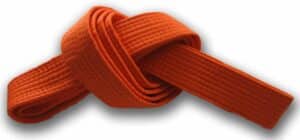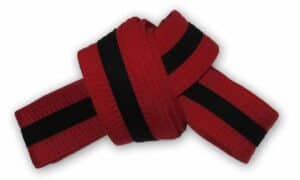Belt Rank Meanings and Definitions

Chon-Ji:
Orange Belt
Chon-Ji means literally “Heaven and Earth”. It is, in the Orient, interpreted as the creation of the world or the beginning of human history. Therefore, it is the initial pattern played by the beginner. This pattern consists of two similar parts, one to represent Heaven, the other Earth. 19 Movements.









